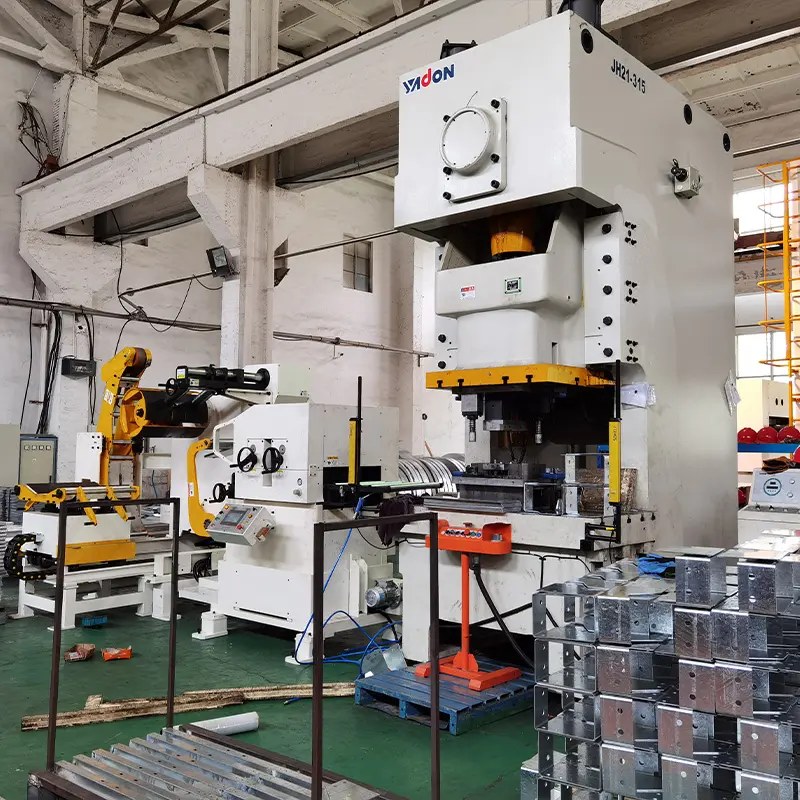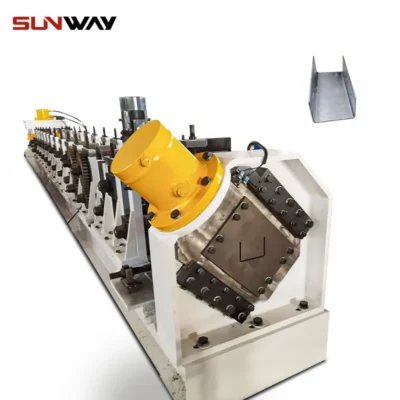Corrugated steel decking is a critical element in construction, especially for projects involving commercial and industrial buildings. It’s a versatile, durable, and cost-effective solution that provides structural support, offers fire resistance, and allows for efficient floor and roof construction. Whether you’re planning a new construction project, exploring steel decking for your next building, or are simply curious about its applications, this comprehensive guide will break down everything you need to know about corrugated steel decking.
Overview of Corrugated Steel Decking
Corrugated steel decking refers to sheet metal panels designed with a repeating wave-like pattern. These panels are used to support floors, roofs, and other building structures, acting as the base upon which concrete or other materials are applied. The corrugated pattern increases the metal’s strength and durability, ensuring it can support heavy loads and withstand environmental elements.
The key benefits of corrugated steel decking include:
- Strength-to-Weight Ratio: The corrugation process strengthens the steel, providing superior load-bearing capabilities without excessive weight.
- Durability: Steel decking is highly resistant to weather conditions, fire, and corrosion, ensuring longevity.
- Ease of Installation: These panels are lightweight and modular, making them simple to install quickly on site.
- Cost-Effectiveness: Due to its strength and durability, corrugated steel decking offers excellent value over its lifespan.
In this guide, we’ll delve deep into the various types of corrugated steel decking, their working processes, key components, installation, and much more.

Corrugated Steel Decking Guide
Types of Corrugated Steel Decking
Understanding the various types of corrugated steel decking is essential, as different applications and projects require different characteristics. Below are the key types of corrugated steel decking based on function and application.
| Type of Decking | Description | Common Applications |
|---|---|---|
| Composite Decking | Corrugated steel combined with concrete to form a strong, composite structure. | Commercial buildings, multi-story office buildings, parking garages. |
| Roof Decking | Primarily designed for roofing systems, this steel deck supports insulation and roofing membranes. | Industrial buildings, warehouses, and commercial rooftops. |
| Form Decking | Used as a form for concrete slabs, providing support while the concrete cures. | Bridge decking, commercial floors. |
| Cellular Decking | Combines standard steel decking with an additional metal layer for improved aesthetics and utility space. | Office buildings, schools, healthcare facilities. |
| Acoustic Decking | Designed with perforations or sound-absorbing materials to reduce noise transmission. | Cinemas, concert halls, sports facilities. |
| Long-Span Decking | Designed for large spans, requiring fewer support beams and open, unobstructed floor plans. | Warehouses, large auditoriums, and arenas. |
| Fiberglass-Reinforced Deck | Corrugated steel decking with fiberglass reinforcement, offering corrosion resistance and lightweight structure. | Chemical plants, coastal buildings, water treatment facilities. |
| Fire-Rated Decking | Fire-resistant coatings applied to steel decking for added protection against fire. | High-risk environments like factories, and storage facilities for flammable materials. |
| Cold-Formed Decking | Made by cold-rolling steel to create a lightweight, high-strength decking panel. | Residential buildings, smaller commercial projects. |
| Galvanized Steel Decking | Coated with zinc to prevent rust and corrosion, making it ideal for outdoor or moisture-prone environments. | Bridges, outdoor walkways, and waterfront structures. |
Working Process of Corrugated Steel Decking
Now that we know the types of corrugated steel decking, let’s explore how these decking sheets are created and used in construction.
Manufacturing Process of Corrugated Steel Decking
- Sheet Metal Selection: The process starts by selecting high-grade steel sheets, typically cold-rolled steel. This type of steel offers excellent durability, flexibility, and resilience.
- Corrugation: The steel sheets are passed through a series of rollers that form the distinctive wave-like pattern. The corrugation increases the structural integrity, allowing the steel to handle significant loads while remaining lightweight.
- Cutting to Size: Once the steel has been corrugated, it’s cut into specific lengths depending on the project requirements. Standard lengths range from 2 feet to 20 feet, although custom sizes can be manufactured.
- Galvanizing (Optional): For applications that require extra resistance to corrosion, the steel is galvanized by dipping it in molten zinc. This protective layer helps the decking resist rust and wear.
- Fire Coating (Optional): For fire-rated decking, a fireproof coating is applied to increase resistance to high temperatures, improving safety in case of a fire.
- Shipping and Installation: The finished decking is then transported to the construction site where it’s installed, often serving as the base for concrete floors or supporting roofing structures.
Key Components and Their Functions
Steel decking involves several key components, each playing a vital role in the performance of the entire system.
| Component | Function |
|---|---|
| Deck Panel | The main corrugated steel panel that provides structural support for floors, roofs, or walls. |
| Shear Studs | Embedded into the deck and concrete to enhance the composite action between the steel and concrete. |
| Welds or Fasteners | Secure the decking panels to the underlying structure (e.g., steel beams or joists). |
| Reinforcement Bars | Often used in conjunction with the deck for additional structural strength in concrete applications. |
| Metal Screws | High-strength screws used to fasten the decking in place, ensuring stability and strength. |
| Sealants/Insulation | Applied to roof decking to provide waterproofing and thermal insulation. |
-
 Carriage Board Roll Forming Machine
Carriage Board Roll Forming Machine -
 Highway Guardrail End Terminal Forming Machine
Highway Guardrail End Terminal Forming Machine -
 Highway U/C Post Roll Forming Machine
Highway U/C Post Roll Forming Machine -
 2 Waves Highway Guardrail Roll Forming Machine
2 Waves Highway Guardrail Roll Forming Machine -
 3 Waves Highway Guardrail Roll Forming Machine
3 Waves Highway Guardrail Roll Forming Machine -
 Vineyard Post Roll Forming Machine
Vineyard Post Roll Forming Machine -
 Auto Size Changeable Sigma Purlin Roll Forming Machine
Auto Size Changeable Sigma Purlin Roll Forming Machine -
 Electrical Cabinet Frame Roll Forming Machine
Electrical Cabinet Frame Roll Forming Machine -
 Din Rail Roll Forming Machine
Din Rail Roll Forming Machine
Machine Speed and Efficiency in Steel Decking Production
Manufacturing corrugated steel decking requires precise and efficient machinery. Here’s an overview of typical machine performance:
| Parameter | Performance Data |
|---|---|
| Average Machine Speed | 15 to 20 meters per minute |
| Efficiency | 90-95% |
| Output per Day | Approximately 1200 to 1600 square meters |
| Maintenance Requirements | Regular lubrication, cleaning, and inspection every 500 operating hours |
Customized Mechanical Parameters for Corrugated Steel Decking
Depending on the project, customized parameters might be needed for steel decking.
| Parameter | Range |
|---|---|
| Sheet Thickness | 0.5mm – 1.5mm |
| Panel Length | Customizable between 1 to 20 feet |
| Profile Height | 38mm to 76mm (depending on required load-bearing strength) |
| Material Grade | Typically ASTM A653 (Galvanized) or ASTM A1008 (Cold-rolled) |
| Coating Thickness | Zinc coating from 180 g/m² to 400 g/m² (for corrosion resistance) |
Applications of Corrugated Steel Decking
Corrugated steel decking has diverse applications, depending on the type and its unique properties. Here’s a breakdown of common uses:
| Application Area | Type of Decking Used |
|---|---|
| Office Buildings | Composite, Cellular Decking |
| Warehouses and Factories | Long-Span, Roof Decking |
| Stadiums and Arenas | Acoustic Decking |
| Parking Garages | Composite Decking |
| Waterfront Structures | Galvanized, Fiberglass-Reinforced Decking |
| Bridges and Outdoor Walkways | Galvanized, Long-Span Decking |
| Concert Halls and Cinemas | Acoustic Decking |
| Residential Buildings | Cold-Formed, Composite Decking |
| Schools and Educational Facilities | Cellular, Composite Decking |
Installation, Operation, and Maintenance of Corrugated Steel Decking
Proper installation and maintenance are crucial to ensure the longevity and performance of corrugated steel decking. Here’s a guide:
| Process | Details |
|---|---|
| Installation | Fasten the deck panels to the steel structure using welds or fasteners, ensuring correct alignment and spacing. |
| Operation | Steel decking is primarily a structural component and requires no operation once installed, apart from load-bearing. |
| Maintenance | Regular inspections for corrosion, damage, or wear. Galvanized panels may need re-coating after 20 years. |
Suppliers and Price Range Details
Corrugated steel decking is available from various suppliers, and prices vary depending on type, thickness, and coating.
| Supplier | Price Range (per square meter) |
|---|---|
| ABC Metalworks | $15 – $25 |
| SteelDeck Inc. | $18 – $28 |
| GalvaSteel Ltd. | $20 – $30 |
| SuperSteel Corp. | $22 – $35 |
| PrimeDecking Solutions | $25 – $40 |
Choosing a Corrugated Steel Decking Supplier
Selecting the right supplier can be critical. Here’s what to consider:
| Criteria | Explanation |
|---|---|
| Reputation | Look for suppliers with positive reviews, industry experience, and proven reliability. |
| Customization Options | Ensure the supplier can meet your specific needs (custom sizes, coatings, etc.). |
| Price Competitiveness | Compare prices from different suppliers but balance this with the quality of service and product. |
| Lead Time | Ask about production and shipping times, especially for large projects. |
| Warranty and Support | Ensure the supplier offers a solid warranty and after-sales support. |
Comparing Pros and Cons of Corrugated Steel Decking
When choosing corrugated steel decking, understanding the advantages and limitations of each option is crucial.
| Feature | Advantage | Limitation |
|---|---|---|
| Composite Decking | Strong, supports heavy loads, long-lasting. | Can be more expensive due to the composite nature (steel and concrete). |
| Galvanized Decking | High corrosion resistance, great for outdoor use. | Higher initial cost due to zinc coating. |
| Roof Decking | Lightweight and quick to install. | Limited load-bearing capacity compared to other types. |
| Long-Span Decking | Allows for open, column-free spaces. | Can be more costly and difficult to transport. |
| Acoustic Decking | Excellent sound absorption properties. | More expensive than standard decking due to additional materials and perforations. |

FAQs
| Question | Answer |
|---|---|
| What is corrugated steel decking used for? | Corrugated steel decking is used for structural support in roofs, floors, and walls, often in combination with concrete slabs. |
| How durable is corrugated steel decking? | It’s highly durable, withstanding heavy loads, harsh weather, and corrosive environments, especially when galvanized. |
| Is it easy to install? | Yes, corrugated steel decking is lightweight, modular, and easy to fasten, making installation quick. |
| Can it be customized? | Absolutely, it can be customized in terms of length, thickness, coating, and profile height. |
| What are the advantages of using it? | Corrugated steel decking offers a high strength-to-weight ratio, durability, ease of installation, and cost-effectiveness. |
Conclusion
Corrugated steel decking is a key player in modern construction, offering unmatched strength, durability, and versatility. With a range of types and applications—from roofing to composite floors—this material is indispensable in both industrial and commercial projects. Choosing the right type of decking, understanding its features, and selecting a reliable supplier will ensure your project’s success. Whether you’re focused on cost-effectiveness, corrosion resistance, or aesthetic appeal, there’s a corrugated steel decking solution for every need.
By following this guide, you’re well on your way to mastering the complexities of corrugated steel decking!
